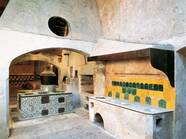Three days of immersion into the editorial mechanism of the entire world. Over 500 authors, hundreds of new titles and booths, panels and events tied to the relationship between new technologies, reading, and the publishing world. Once again, the Javits Center with its immense structure welcomed hundreds of publishing houses from Wednesday 27th to Friday 29th.
BEA – Book Expo America – the biggest and most anticipated editorial fair in the United States, presents itself surrounded by huge colored banners, captivating signs, gigantic book covers that attract readers and the general public.
The weapon at hand is the book itself, flipping through it, smelling it, discovering it. Cooking and art (architecture, fashion, design, photography) never cease to be popular topics, but also themes such as magic and esotericism, fiction, illustration, and especially publications for children are pushed by the editorial market.
The undisputed star of the show was the China delegation, the largest international delegation to ever attend the event. Expected participation will include 500+ professionals representing more than 100 publishing companies, upwards of 50 authors; all involved in 300+ professional and cultural events through BEA.
The section of the Italian Pavillion organized by the Italian Trade Agency and AIE (Trade Association for Italian Publishers) presents itself with just as many colors and innovations. In collaboration with Bologna Children’s Book Fair, one of the world’s most important fairs, it presented a selection of the most influential Italian illustrators from the prestigious Mostra degli Illustratori (Illustrators Exhibition), which is held every year in Bologna.
Conceived by the Fiera del Libro per Ragazzi (The children’s book fair), ever since 1967, the Mostra degli Illustratori offers artists from all over the world a unique space to showcase their talent and get initiated into the editorial market.
The need to specialize the publishing branches aimed at children and teens comes primarily from the United States. In the museum field there are already many children’s publications. An example is Charles Kim, Associate Publisher for the Museum of Modern Art (MoMA), who this year was part of the jury that selected the works in the Mostra degli Illustratori of Bologna.
“In Europe we work in various selected markets such as London and Frankfurt, and we never skip New York. At the ICE (Italian Trade Commission) in Chicago we have an editorial desk with its own website, which we called italbooks.com” Leopoldo Sposato, Deputy Director at Chicago’s ICE, tells us.
“We offer Italian publishing houses a public presence where there is news on the industry and the works they wish to promote on the American market. We try to be a great free showcase”. It’s obviously a question of a publishing crisis, and of an American market diverging in both numbers and logic from the Italian one. “We’re strongly pushing fiction, which here in America is a highly appreciated genre. Camilleri for example, is deeply admired”.
Amongst the other stands, we can also find household names like Rizzoli USA, who after its heartfelt closure should soon reopen its new location; Europa Editions; De Agostini, distributed on American soil through Sterling, American publisher and distributor, owner of Barnes & Nobles bookstores. “Alternative business” explains Nicolo Boggio, Foreign Rights Manager for De Agostini, “is selling and yielding rights”.
As we walk, we discover other interesting editorial realities, with their own peculiarities and their own projects. Giunta Editore, 24 Ore Cultura, the young Sime Books, founded by Giovanni Simeone, photographer and founder of the photographic agency Simephoto, which presents bilingual cookbooks that make use of appropriate American terms.
Sillabe, specialized in art publications: exhibition catalogs, guides, essays, restoration, art for children, and artistic stationary.
Eye-catching is the beauty of the magical and enchanted covers by Logos Editions, which welcomes us with editor Lina Vergara Huilcaman. The publishing house targets niche groups and young Italians and non-Italians, offering an interesting and vast selection in the artistic sector. Impossible to ignore the second book to appear in Italian and English edition by Pietro Sedda, internationally renown tattoo artist, Black novels for lovers, a collection of novels written in ink on skin.
Paper Vision, another interesting project by the young artist Elena Borghi. An “artisanal book”, a first collection we could say, of #window designs, where the subject/object of the window becomes the protagonist thanks to the narrative developed around him/her by the artist, #paper designer, or visionary on paper, who ideates, projects and creates worlds of paper for the windows of Milan’s most elegant stores.
We also met Cartiere del Garda, an internationally established industry, specializing in the printing of books, which produces paper and whose brand is recognized by the editorial print. An unusual occurrence, that of directly meeting those who produce paper “We are a paper mill based in Riva del Garda, we produce 350 thousand tons of paper and for 27 years we have been part of a great German publisher, Berghesman, and it taught us to produce paper that can be used to print high quality books” explains the director of the foreign market Alessandro Nardelli. Among their New York clients are the Metropolitan Museum of Art and the MoMA.
If you’re still not satisfied with these editorial pills on the Italian publishing houses present at the BEA, these days there are many events you shouldn’t miss such as Death of a Happy Man: Conversation with the author Giorgio Fontana, winner of the 2014 Premio Campiello, about his literary journey.







































